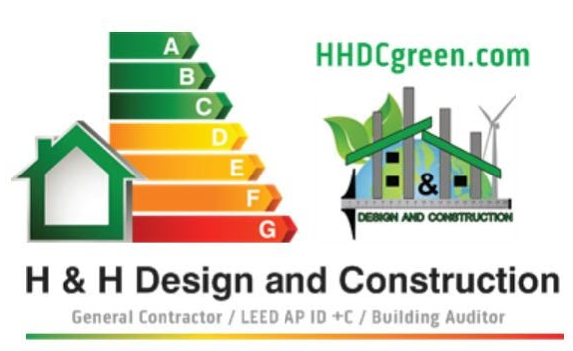[
October 2, 2019
H & H Design and Construction
4th annual national event urging everyone to
“Save Money. Cut Carbon. Breathe Easier.”
Weston— In recognition of the 4th annual national Energy Efficiency Day (EE Day) on Wednesday, October 2, 2019, H & H Design and Construction is joining regional and national organizations, businesses, utilities, universities, and individuals in promoting energy efficiency – the cheapest, quickest way to meet our energy needs, cut utility bills, and reduce pollution.
Energy efficiency is also an economic engine, with a U.S. workforce of more than 2.3 million. Ranging from professional services to manufacturing and construction, these good jobs are local and cannot be outsourced.
“We believe our mission is to build a sustainable future for generations to come by promoting and implementing energy efficiency, water conservation, Carbon emissions reduction and Climate change mitigation strategies to protect the people, the planet and its natural resources“. Said, Maria M. Hernandez, President of H & H Design and Construction.
Smarter energy use means we don’t have to generate as much power to meet our needs. Many people don’t realize that H & H Design and Construction has already made significant, reduction in energy savings, by implementing buildings retrofit in South Florida benefiting people’s health, local economy and the environment.
Reducing the energy used by manufacturers, homes, and businesses benefits everyone – especially energy bill-payers. The average household saves almost $500 yearly thanks to efficiency standards that apply to new appliances such as dishwashers and refrigerators.
“We believe we can transform the built environment: improving health, safety and quality of life, one person, one building, one family at a time“. Maria M. Hernandez
To learn more about H & H Design and Construction ’s energy efficiency efforts, visit HHDCgreen.com, or join the Twitter conversation using #EEDay2019
# # #
GOING BEYOND BUILDING STANDARDS FOR PEOPLE AND PLANET!
About #EEDay2019: On Wednesday, October 2, 2019, a growing network of advocates, companies, government agencies, utilities, and others will showcase the benefits of energy efficiency during the 4th annual nationwide Energy Efficiency Day. Learn more at www.energyefficiencyday.org



